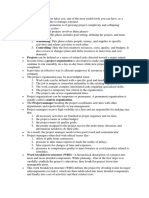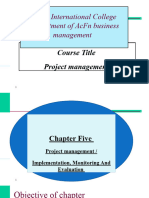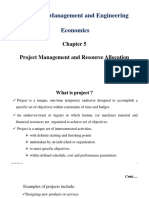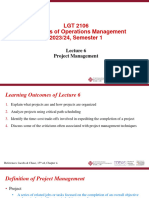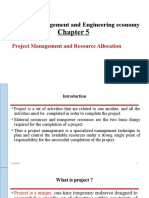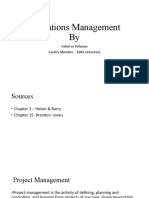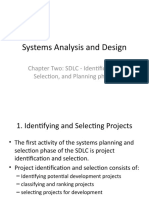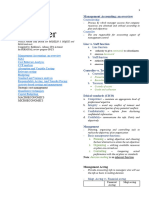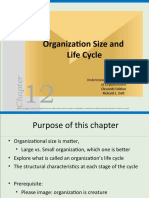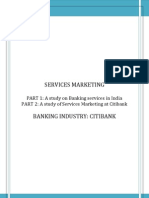0% found this document useful (0 votes)
25 views44 pagesPM Chap 5
Chapter Five discusses project implementation, monitoring, and evaluation, emphasizing the importance of proper planning, organization, and resource management for successful project execution. It outlines various organizational structures, project planning steps, and monitoring techniques, including Gantt charts and the Critical Path Method (CPM). Additionally, it highlights the significance of monitoring and evaluation (M&E) in tracking progress, ensuring accountability, and assessing project impact.
Uploaded by
anasoabdulkadir7Copyright
© © All Rights Reserved
We take content rights seriously. If you suspect this is your content, claim it here.
Available Formats
Download as PDF, TXT or read online on Scribd
0% found this document useful (0 votes)
25 views44 pagesPM Chap 5
Chapter Five discusses project implementation, monitoring, and evaluation, emphasizing the importance of proper planning, organization, and resource management for successful project execution. It outlines various organizational structures, project planning steps, and monitoring techniques, including Gantt charts and the Critical Path Method (CPM). Additionally, it highlights the significance of monitoring and evaluation (M&E) in tracking progress, ensuring accountability, and assessing project impact.
Uploaded by
anasoabdulkadir7Copyright
© © All Rights Reserved
We take content rights seriously. If you suspect this is your content, claim it here.
Available Formats
Download as PDF, TXT or read online on Scribd
/ 44





